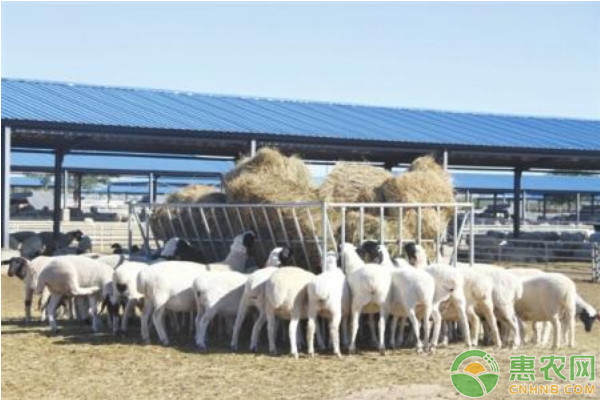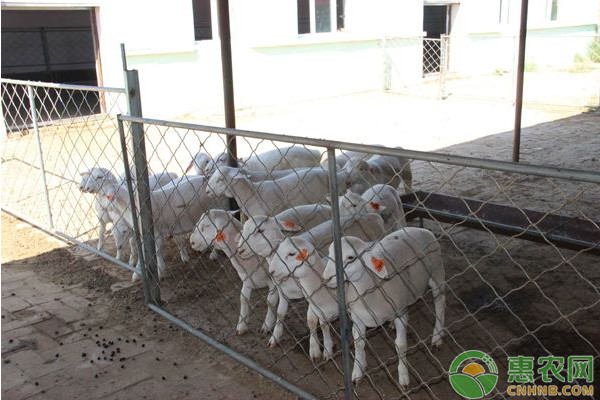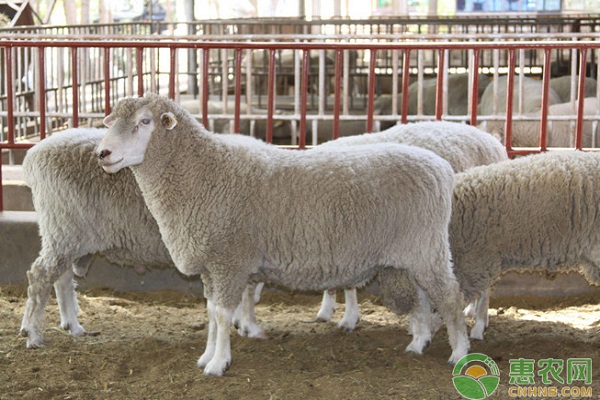Sheep ruminant is an acute infectious disease for sheep or goats and is a relatively serious infectious disease. The morbidity and mortality of the sheep ruminant is not low. Once it occurs, it will seriously affect the economic benefits of the ranchers. The following mainly study the epidemiological characteristics and prevention and control methods of the sheep ruminant epidemic disease.

First, the pathogen characteristics
The sheep ruminant virus is a paramyxoviridae, a genus of measles virus, which has similar immunological and physical characteristics to burdock virus. The shape of the virus is a rough spherical shape. The size of the virion is about the size of the virus. The particles of the virus are larger than the calves, and have sub-units with characteristic properties. In addition, there are capsules on the top of the capsule. The virus can grow and multiply in the testicular cells of the kidney, fetal or newly born lamb of the fetal sheep, and can also be propagated in the cells. The in vitro culture will produce obvious cytopathic phenomenon, and the main lesion is the formation of syncytia. The small ruminant virus suspension is about 2 hours during the half-life at 37 ° C; at 50 ° C, half an hour leads to virus death; in a frozen or refrigerated environment, the survival time is relatively high. long. It has been experimentally found that in the carcass of goats infected with small ruminants, such viruses can be detected within the lymph nodes after storage at 4 ° C for 8 days. The virus's ability to resist the outside world is relatively weak. In the case of general disinfection, it can kill such viruses, and the use of phenol and has effective disinfection. The small anti-prion virus cannot be transmitted to people, and it is not a zoonosis.

Second, the harm of small anti-caries
(1) The epidemic characteristics of small ruminant
Goats and sheep are the main natural infection hosts of the virus. Wild small ruminant species such as Gemsbok, wild goats and rock sheep, as well as Asian buffalo and Asian camels are also prone to such diseases. The virus is mainly prevalent in central Asia and western Africa. area. According to relevant data, goats are more susceptible to such viruses than sheep, and the symptoms manifested in the clinic are more serious. The susceptibility of different breeds of goats to the virus also differs; the susceptibility of sheep of different ages also varies. Young sheep from 2 to 18 months are more susceptible than adult sheep, and young lambs who eat breast milk are more resistant.
The disease is mainly transmitted through the respiratory tract and digestive tract of the animal. The main way of transmission is through contact with each other. The feces, urine and oral or nasal secretions of the diseased sheep contain a large amount of the virus.
(2) Distribution and harm of the virus
The virus was first discovered in the Ivory Bay in West Africa in 1942. It is mainly distributed in parts of African countries. Today it is found in almost all Middle East, West Asia and South Asian countries. The disease occurs in the surrounding areas of China. In 1992, Jordan discovered the virus in sheep and goats; it was discovered in Saudi Arabia in 1993, and was first reported by Israel in the same year; in 2007, the virus was first discovered in the Ali area of ​​Tibet, China, 2013. At the end of the year, the disease was discovered in Xinjiang, China. In recent years, the disease has appeared in many parts of China.
The disease is often endemic. After the outbreak of the disease, there will be a period of relaxation for several years. Once the disease breaks out in the flock, the symptoms of severely infected sheep may cause redness, coughing, difficulty breathing, and then lower body temperature. Excretion of feces containing blood water, the body feels obvious dehydration, diarrhea occurs later, severe weight loss, mortality is 70%-80%. It can be known from the disease-occupied areas that the disease is mainly distributed in poorer parts of the world. This has caused serious economic losses to the sheep breeding industry and even the animal husbandry. Therefore, controlling the small ruminant disease has also Significance.

Third, prevention and control measures
(1) Prevention is the main
The prevention and control of such diseases is mainly based on prevention. The preventive measures are mainly vaccine immunization. At present, the live vaccine of sheep ruminant is mainly used, diluted with sterile physiological saline, and 1 ml of muscle is injected into the neck of each sheep. Antibody protection can be up to 36 months after immunization. If a sheep is found to be infected with this disease, according to the current technical regulations for the prevention and control of small ruminants, it is not allowed to be treated. It is necessary to report it to the relevant veterinary department and immediately cull and harmlessly treat the infected animals. Secondly, comprehensive management should be carried out. After the new introduction of sheep, it is necessary to observe and observe after a period of isolation and observation; after the manure is to be deposited and fermented, it can be transported out of the manure field; the sick and dead sheep should be treated in a timely manner, and it is forbidden to abandon and sell at will. Or eat; strictly control the entry and exit of the personnel in the field, keep the pens clean and ventilated, maintain a good growth environment, and prevent the disease from occurring during the seasons of alternating seasons.
(2) Strict disinfection measures
In the process of sheep breeding, the development of scientific and standardized disinfection management can effectively prevent the occurrence of the disease. For example, in the sheep activity channel, the surrounding area of ​​the pen, the collection of feces, and the tools after use, select a non-toxic or low-toxic disinfectant to be disinfected once a week; after each batch of sheep is released, the sheep house should be thoroughly cleaned and disinfected. After 5-7 days, the new sheep can be introduced; the staff's clothing, shoes and hats should be strictly cleaned and disinfected every day. Special attention should be paid to the simultaneous use of acidic and alkaline disinfectants. Regular disinfection of different disinfectants should be carried out. Secondly, set up disinfection facilities in the farm. For example, set up a disinfection tank at the entrance of the farm. The disinfection tank is about 4 meters long, the width can be the same as the gate, 2-3 meters is suitable, and disinfectant or disinfectant powder is added inside. Disinfectant should be replaced regularly to ensure that the disinfectant is effective; generally, lime or 2% caustic soda can be selected for disinfection of the vehicle; the disinfection channel at the door is installed at the top and the sides of the channel. Place the disinfection pad on the ground of the channel, and disinfect the in and out personnel with 2% peracetic acid preparation, caustic soda, and poisonous killing.
During the breeding process of sheep, it is necessary to pay attention to observe the health status of the flock. If it is suspected to be sick, it should be isolated in time to restrict the movement of the sheep, which can effectively prevent other sheep from being infected, and report to the local veterinary department at the same time. If it is diagnosed as a small anti-veterinary virus, it should be promptly handled in accordance with relevant state regulations, timely isolation of the sheep in the affected area, emergency vaccination, enhanced disinfection, and prohibited sale.
Doxycycline Hyclate Soluble Powder
Doxycycline Powder,Doxycycline Soluble Powder,Doxycycline Hydrogen Fumarate Powder,Doxycycline Animal Drug
Shandong Shengli Bioengineering Co., Ltd , https://www.shenglipharm.com